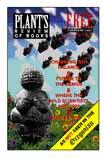

"A revolt against nature: a woman genius"- Mirbeau
"I showed her where she could find gold but the gold she finds belongs to her"- Rodin
"She was locked up in 1913 and, after thirty years of seclusion, died on October 19, 1943, in the asylum of Montdevergues.
She leaves us a work stamped with the seal of exemplariness: small but of a quality that makes it equal to the works of the greatest sculptors, beginning with Rodin."
--from "A plea for Camille Claudel" by Jacques Cassar
Whew! Just barely through the introduction and the tone for the book has been set. The next 224 pages are a wonderful insight into the life of one of the greatest sculptors of all time.
Reine-Marie Paris brings Camille to life for us, and allows us to care for her; without resorting to hype, speculation, or hearsay. Based solely on factual data, the book isn't cold or clinical, but manages to be just the opposite. It guides us through the life of Camille Claudel: from what life must have been like in her family's household before the turn of the century to the letters she wrote from the asylum of Montdevergues before her death. It provides insight into how one of the brightest lights of the art world was snuffed out. It is the life story of a talent so great that it is virtually criminal that we are not left with a greater body of work to appreciate.
This woman who rates only a few paragraphs in books on the life and works of Rodin was in fact not merely Rodin's pupil or disciple as suggested in many of those volumes. By the time they had met, Camille was in fact an accomplished sculptor in her own right. It is hypothesized in the book; and is borne out by scrutiny of Rodin's art at the time, that Camille was not only his equal but provided Rodin with inspiration.
Her split with Rodin and subsequent self-imposed isolation were the beginning of the end for Camille Claudel. Was the persecution complex that kept her in solitude and silence for many years purely psychosis, or is there more basis in fact for her seclusion than we will ever be able to uncover historically? We do know that in all the years she sculpted with Rodin she signed only three of her pieces. This leaves a lot of room for speculation and conjecture. In any case, perhaps Camille was simply born to soon, into a world that was not prepared for such a strong willed, independent, and enormously talented woman.
The two most striking features of the book are the powerful detailed photographs of Claudel's art, and correspondence both from and to the artist. These alone are worth the price of admission, and capable of moving even the most cynical and skeptical of us.



 Return to Facing
Return to Facing